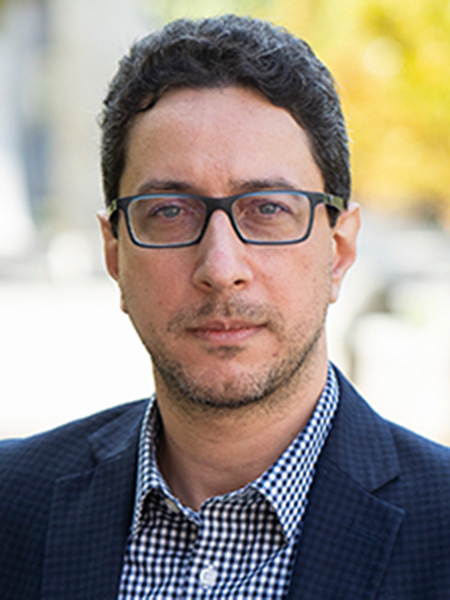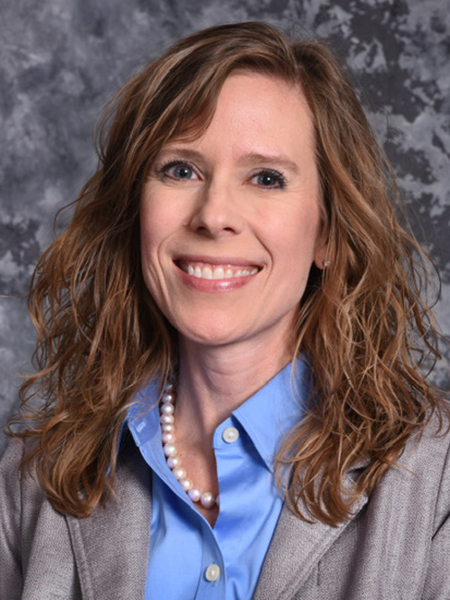Three Purdue Engineering faculty receive 2022 DOE Research and Development Awards
The U.S. Department of Energy has awarded a total of $3.05 million to three Purdue Engineering faculty through its Nuclear Energy University Program (NEUP). NEUP seeks to maintain U.S. leadership in nuclear research across the country by providing top science and engineering faculty and their students with opportunities to develop innovative technologies and solutions for civil nuclear capabilities.
Anant Raj, postdoctoral researcher in nuclear engineering and the technical lead of the project, and Hany Abdel-Khalik, associate professor of nuclear engineering and the principal investigator of the project, will use their award to study Physics-Guided Smart Scaling Methodology for Accelerated Fuel Testing.

Scaled fuel testing experiments like MiniFuel and fission accelerated steady-state tests (FAST), enable accelerated testing for nuclear fuels, thereby reducing the overall costs for the fuel development cycle, and increasing the economic competitiveness of nuclear energy. However, there are limited rigorous quantitative estimates of the uncertainties when scaling the results of such experiments from the scaled experimental state to the actual application state. For instance, the impact of the high burnup rates employed during the FAST experiment on fuel performance is non-trivial. Thus, the nuclear regulatory bodies frequently rely on artificial scaling distortion uncertainties, which are usually conservatively bound, leading to cost inflation.
Their team proposes to address this challenge by employing high-fidelity simulations in conjunction with machine learning techniques in a non-traditional manner to develop a direct mapping of experimental biases and uncertainties from the scaled state to the application state.
The team will employ BISON code — a finite element-based nuclear fuel performance code — under Idaho National Laboratory’s Multiphysics Object Oriented Simulation Environment (MOOSE) to model the thermo-mechanical fuel response. Using a rate theory-based model, they will capture the scaling effects related to time-dependent burnup rate calculations and their impact on fuel performance.
“While any simulation is expected to be plagued by uncertainties, machine learning can be used for extracting low-uncertainty recurring patterns — which allow for the construction of a rigorous mapping of uncertainties between the two states,” Abdel-Khalik said.
Using discriminative machine learning algorithms, the team will extract patterns between the simulated and experimental response, which will eventually guide the mapping of the experimental response between the two states. Their approach will not only enable mapping of uncertainties between the two states for existing experimental data but will also develop an experimental relevance criterion, allowing analysts to measure the value of a new experiment and its associated measurements in terms of the potential reduction in application state uncertainties.
“This capability will prove essential in driving down the overall cost of the experimentation, as it will allow measuring the value of an experimental setup before it is conducted,” Anant said.

Collaborators include Marat Khafizov, associate professor in the nuclear engineering program within the department of mechanical and aerospace engineering at The Ohio State University; Aysenur Toptan, computational staff scientist in the BISON team; and Colby Jensen, national technical lead for transient testing, at Idaho National Laboratory.
Stylianos Chatzidakis, assistant professor of nuclear engineering, will use Purdue University’s Research Reactor (PUR-1) as an autonomous control testbed. PUR-1 is the first research reactor in the U.S. with fully digital instrumentation and control (I&C) and unique digital capabilities including remote monitoring. The proposed research will experimentally demonstrate autonomous control and remote operation and use the findings to explore issues related to human factors for microreactors while providing a set of unique real-world data.
PUR-1 will provide a unique opportunity to develop readily deployable control technologies and regimes that enable unattended and reliable operations.
The United States is on the precipice of a surge in the deployment of nuclear technology, the likes of which have not been seen since the 1960s. The passive advanced nuclear systems currently under development, e.g., microreactors, are designed to be much smaller — both in size and power output — than the medium and large commercial nuclear plants in operation today and will enable remote operation and control in remote areas.
There are numerous remote mining operations and communities with limited access to a grid that could benefit from a microreactor power source. At present, the cost to generate their electricity becomes exorbitant, not only from the price of the diesel fuel or the variability of renewables, but also from the transportation costs associated with moving the fuel over long distances on often unpaved roads and lack of access many months per year.
“To fill this critical gap, we will develop a modular autonomous control platform with various levels of automation using a remote workstation with Machine and Deep Learning algorithms,” Chatzidakis said. “The algorithms will be trained using data from existing physics-based high-fidelity microreactor models and real-time digital operation data collected from PUR-1. Then, we will demonstrate remote operation and perform thorough testing and validation under an actual nuclear environment in PUR-1 using real data from reactor sensors and digital controllers.”
Finally, he said the team will evaluate performance for various levels of automation and identify inputs needed for a human to safely monitor and operate a microreactor from a remote location.

Collaborators include Mohamed El-Genk, Distinguished and Regents’ Professor of Nuclear, Mechanical, Chemical and Biological Engineering; and Timothy Schriener, research assistant professor of nuclear engineering at University of New Mexico; Richard B. Vilim, senior nuclear engineer at Argonne National Lab; and Robert Ammon, technical director for Digital Safety Systems at Curtiss-Wright Nuclear.
Maria Okuniewski, assistant professor of materials engineering and assistant professor of nuclear engineering by courtesy, and her research team will use the award to perform advanced post-irradiation examination, including microstructural, thermal, and mechanical characterization, on an accelerated in-reactor experiment (FAST - Fission Accelerated Steady-state Test), including U-10Zr fuel rodlets clad in HT-9 with and without Zr liners. Experiments will be complemented with lanthanide fission product diffusion modeling.
Results from the experiments and computational studies will be integrated into MARMOT/BISON, codes that have been developed by Idaho National Laboratory (INL) to enable next-generation fuel performance modeling capabilities as part of the Nuclear Energy Advanced Modeling and Simulation (NEAMS) program’s Fuel Product Line (FPL).
Uranium-zirconium (U-Zr) alloys are candidate fuels for fast reactor designs under development by private industry and the U.S. Department of Energy. “However, U-Zr fuels are not currently qualified for use within these reactors. Fuel qualification is a costly process that typically takes over 20 years from the conceptualization of the fuel type, followed by prolific neutron irradiations and extensive post-irradiation examinations,” Okuniewski said.
In order to accelerate the fuel qualification process, the FAST experiments will explore the possibility of reducing the neutron irradiation timeline by modifying the fuel pin geometry to replicate similar irradiation-induced phenomena observed in historical irradiations. The FAST experiments will also introduce fuel liners to extend the cladding lifetime, and thus improve the reactor economics.
Collaborators include Geoffrey Beausoleil, nuclear fuels engineer, and Larry Aagesen, computational scientist, from INL, as well as Benjamin Beeler, assistant professor of nuclear engineering at North Carolina State University.
